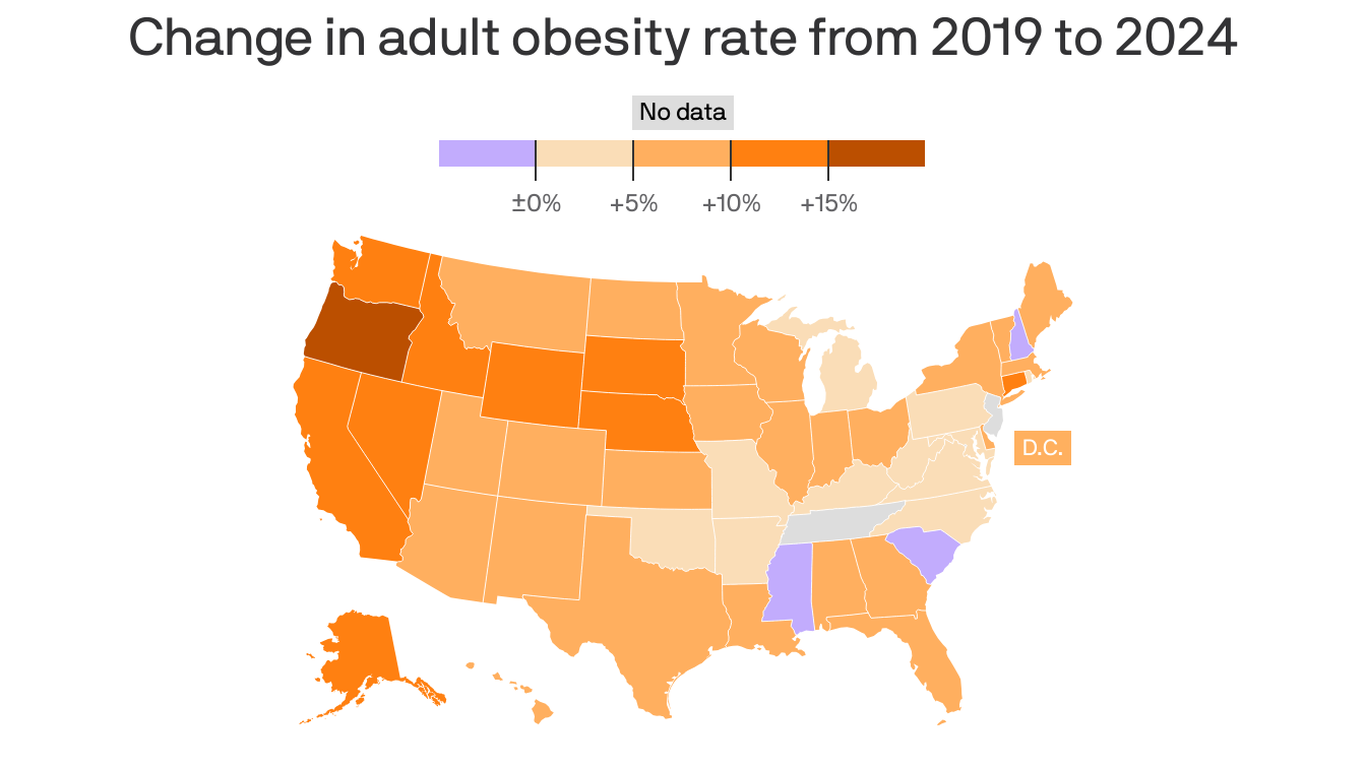
"Driving the news: Nineteen states have adult obesity rates at or above 35% as of 2024, per a new "State of Obesity" report from the nonprofit, nonpartisan Trust for America's Health (TFAH). That's a drop from 23 states the year before - and the first decrease since states began hitting the 35% mark in 2013, the group says. Yes, but: Back in 2014, only three states had obesity rates at or above 35%."
"Between the lines: Obesity is tied to certain socioeconomic factors. Black and Hispanic Americans have higher rates compared to other groups, for example, while obesity is more prevalent in low-income households compared to high-income households. The big picture: The nationwide obesity rate is stalling or even declining, per separate data, possibly thanks to new anti-obesity drugs. The success of those drugs is fueling calls to change how we talk about weight, Axios' Tina Reed reports."
Obesity has been linked to hundreds of billions in increased annual medical costs. In 2024, nineteen states had adult obesity rates of 35% or higher, down from 23 the year before and up from three in 2014. Several states saw large increases between 2019 and 2024, including Oregon (+16%), Nevada (+12%) and South Dakota (+12%). West Virginia (41.4%), Mississippi (40.4%) and Louisiana (39.2%) had the highest rates. No state had an obesity rate under 25% for the first time since 2011. TFAH's analysis uses CDC Behavioral Risk Factor Surveillance System data. Obesity is more prevalent among Black and Hispanic Americans and in low-income households. National rates appear to be stalling or declining, possibly due to new anti-obesity drugs, prompting reevaluation of BMI.
Read at Axios
Unable to calculate read time
Collection
[
|
...
]